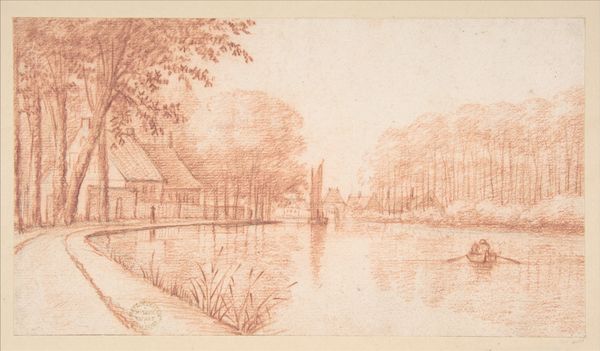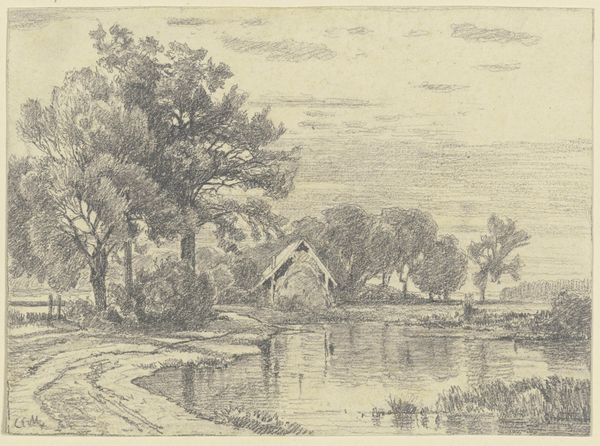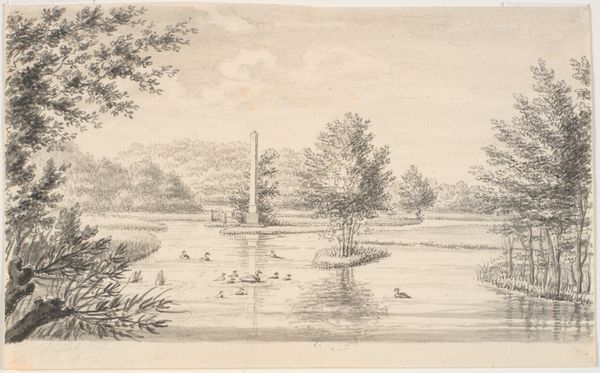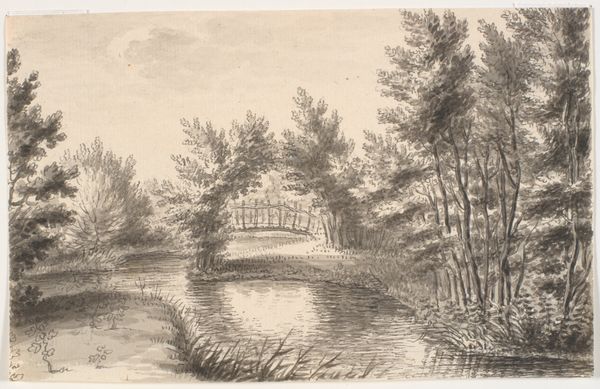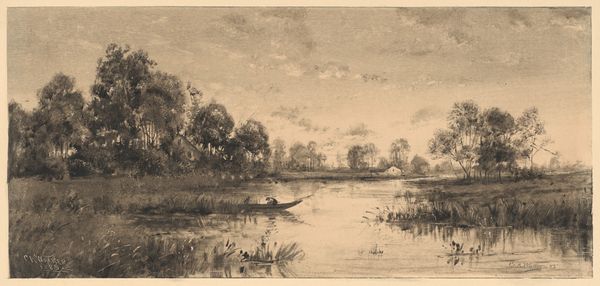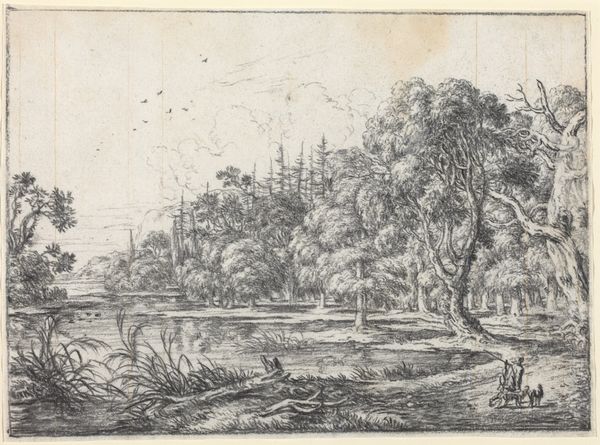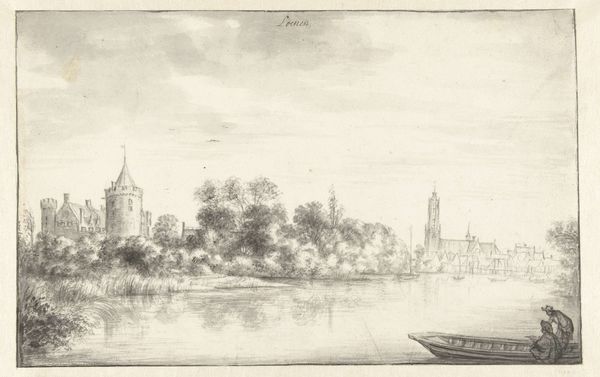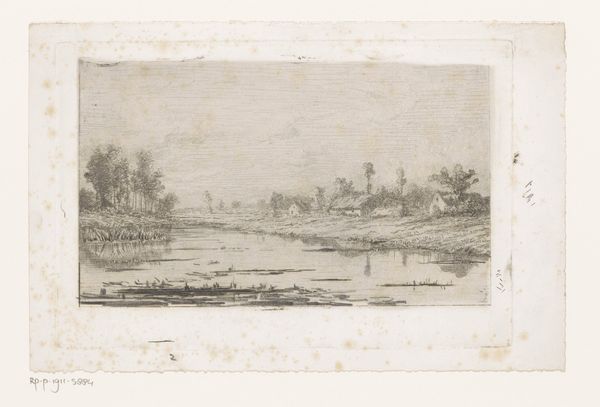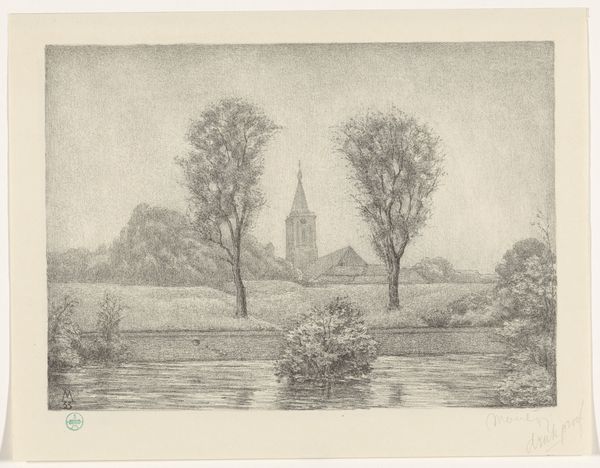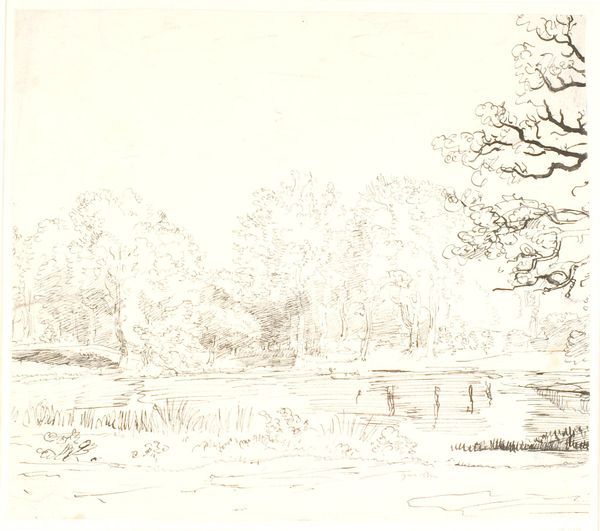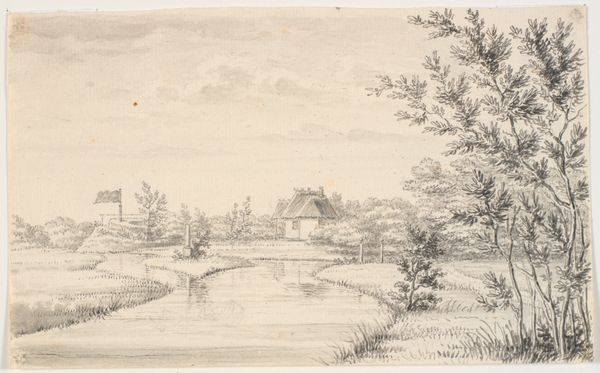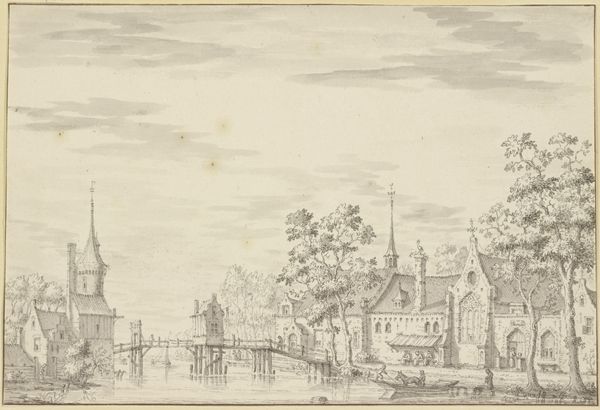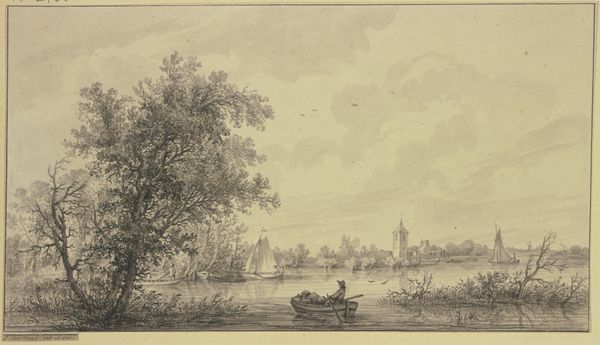
Flussgegend zwischen Bäumen, rechts ein Segelschiff, links ein Boot, im Hintergrund ein Turm
0:00
0:00
drawing, dry-media, charcoal
#
drawing
#
baroque
#
landscape
#
dry-media
#
charcoal
Copyright: Public Domain
Editor: Wow, this scene just washes over me with a sense of tranquil... maybe a little melancholic stillness? It's so muted. Curator: Indeed. What you're observing is a charcoal drawing by Abraham Rutgers, titled "Flussgegend zwischen Bäumen, rechts ein Segelschiff, links ein Boot, im Hintergrund ein Turm," held here at the Städel Museum. Though undated, its baroque stylistic features are quite distinctive. Editor: Baroque, huh? I’m picking up way less of the drama and grandiose flourish that usually leaps to mind when I think "Baroque." This feels more… introspective. Look at that solitary figure rowing the boat in the lower left—it’s practically a whisper of a scene. Curator: It’s fascinating how Rutgers subverts those expectations, isn't it? By focusing on a more pastoral setting, he engages with the socio-political context of landscape art itself. We must ask ourselves, whose vision of nature is centered here? How does the depiction of everyday life within a seemingly idyllic setting possibly reflect or possibly challenge power structures? Editor: You always make me think, I love it! Seriously, it's not just scenery. Is he deliberately muting those power dynamics, softening the usual bold statements we associate with the Baroque to show something more... domestic? It makes me wonder, was he trying to include the average person in the Baroque landscape? The charcoal medium contributes too, with the way he's using shadow and light—it feels less about making a show and more about intimacy. Curator: Precisely! Consider that charcoal, a readily available medium, grants access to a wide spectrum of artistic creators. Rutgers' choice and his gentle hand situate this landscape away from purely aristocratic commissions and ideals and perhaps even more within the rising middle-class sensibilities of the era. Editor: I keep coming back to that rower, and that small sailboat across the way. They seem so at peace in this moment, whatever the bigger context is. It's lovely. What are your final thoughts about it? Curator: I'd say that Rutgers' artwork serves as a compelling visual invitation. We’re encouraged to reflect upon not only the aesthetics of landscape in the Baroque period, but on the nuanced interplays of representation, medium, and societal shifts. Editor: It certainly did that for me. Now, where’s the museum cafe? I’m suddenly in the mood to people-watch by a river.
Comments
No comments
Be the first to comment and join the conversation on the ultimate creative platform.
